11 Best Herbal Tinctures For Periodontal Disease
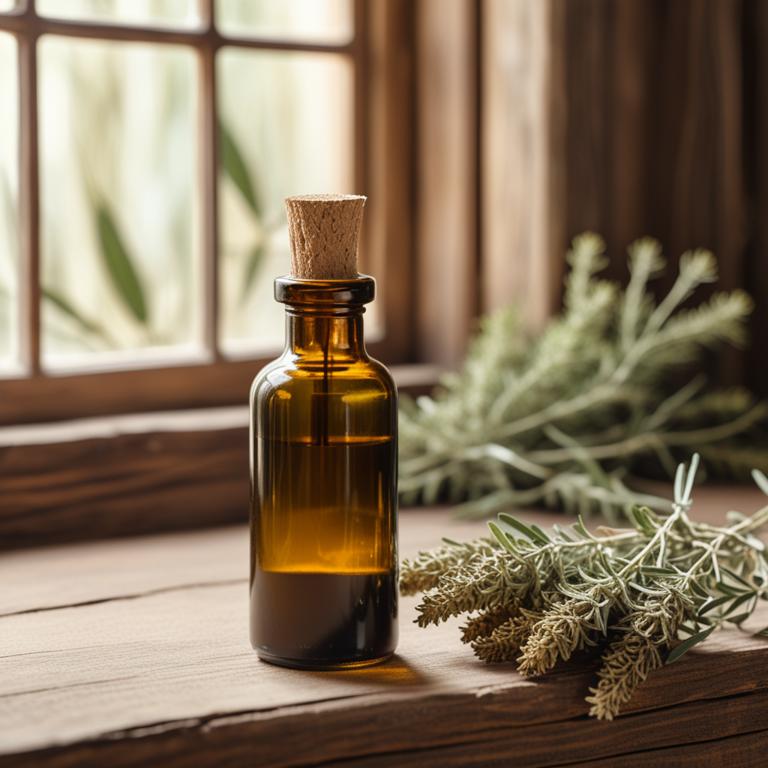
Herbal tinctures for periodontal disease are concentrated liquid extracts of plant-based ingredients used to prevent and treat gum diseases.
These tinctures have gained popularity as a natural remedy due to their numerous benefits, including reducing inflammation, preventing bacterial growth, and promoting oral health.
Some examples of herbal tinctures used to treat periodontal disease include Echinacea, which has anti-inflammatory properties; Sage, which has antibacterial properties; Neem, which has antimicrobial properties; Clove, which has analgesic and anti-inflammatory properties; and Myrrh, which has antibacterial and anti-inflammatory properties.
These herbal tinctures can be used as a complementary treatment to conventional therapies, providing a holistic approach to managing periodontal disease and promoting overall oral health.
According to the "Journal of International Society of Preventive & Community Dentistry", tinctures for periodontal disease can be made from the extracts of various medicinal plants, including Mangifera indica, Pongamia pinnata, the husk of Cocos nucifera, the root of Glycyrrhiza glabra and Curcuma longa, leaves of Psidium guajava and Azadirachta indica, fruits of Citrus medica and Punica granatum, Ocimum Moringa oleifera extract, and pomegranate peel extract, which have anti-inflammatory, antioxidant, antibacterial, and astringent properties that can help reduce gingival and periodontal diseases.
Below there's a list of the 11 best herbal tinctures for periodontal disease.
- 1. Hydrastis canadensis tinctures
- 2. Cinchona officinalis tinctures
- 3. Sanguinaria canadensis tinctures
- 4. Mentha x piperita tinctures
- 5. Equisetum arvense tinctures
- 6. Eucalyptus globulus tinctures
- 7. Aloe barbadensis tinctures
- 8. Commiphora molmol tinctures
- 9. Thymus vulgaris tinctures
- 10. Artemisia absinthium tinctures
- 11. Glycyrrhiza glabra tinctures
Also you may be interested in...
TODAY'S FREE BOUNDLE
Herb Drying Checklist + Herbal Tea Shopping List + Medicinal Herbs Flashcards
Enter you best email address below to receive this bundle (3 product valued $19.95) for FREE + exclusive access to The Aphotecary Letter.
$19.95 -> $0.00
1. Hydrastis canadensis tinctures
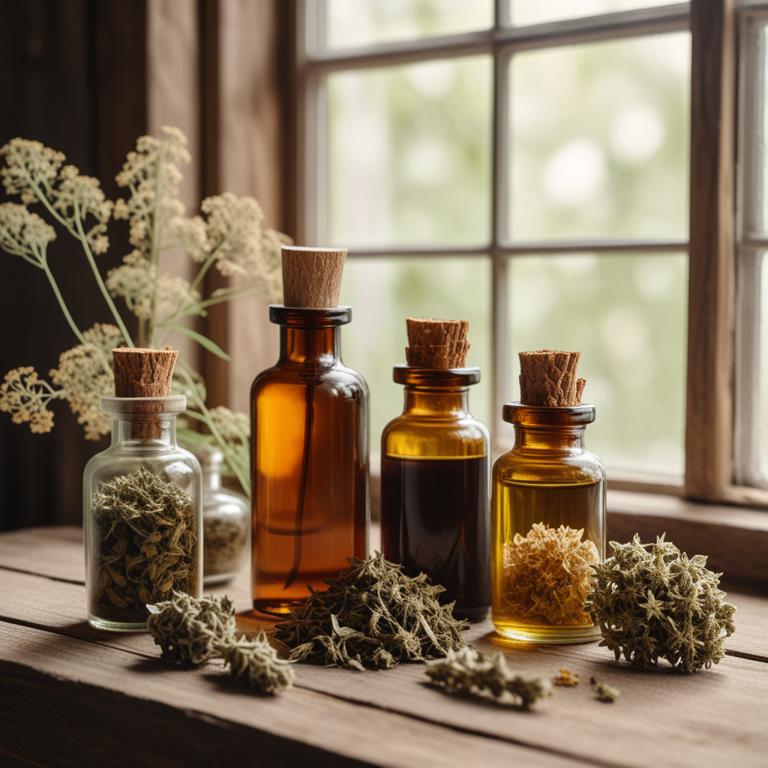
Hydrastis canadensis tinctures, derived from the root of the goldenseal plant, have been traditionally used to treat periodontal disease due to their antimicrobial and anti-inflammatory properties.
The tannins and berberine present in Hydrastis canadensis tinctures help to reduce the growth of bacteria that cause periodontal disease, thereby alleviating symptoms such as gum inflammation and bleeding.
These bioactive constituents also exhibit antiseptic and antiviral activities, making Hydrastis canadensis tinctures an effective remedy for treating periodontal disease.
The benefits of using Hydrastis canadensis tinctures to treat periodontal disease include reduced inflammation, improved gum health, and a lower risk of complications such as tooth loss.
2. Cinchona officinalis tinctures

Cinchona officinalis tinctures have been traditionally used to treat periodontal disease, a bacterial infection of the gums and bones supporting the teeth, due to their antimicrobial and anti-inflammatory properties.
The bioactive constituents, including quinine and quinidine, help to reduce inflammation and prevent the growth of bacteria that cause periodontal disease.
By inhibiting the production of enzymes that contribute to the progression of periodontal disease, Cinchona officinalis tinctures help to treat this ailment and promote the healing of infected tissues.
The benefits of using Cinchona officinalis tinctures to treat periodontal disease include reduced inflammation, improved gum health, and a lower risk of tooth loss.
3. Sanguinaria canadensis tinctures

Sanguinaria canadensis tinctures have been traditionally used to treat periodontal disease due to their anti-inflammatory, antimicrobial, and antiseptic properties, which help to combat the bacterial infection and inflammation associated with the condition.
The bioactive constituents of Sanguinaria canadensis, including benzylisoquinoline alkaloids and sanguinarine, possess potent antimicrobial activity, helping to reduce the bacterial load in the oral cavity and promote healing of the gum tissue.
By reducing inflammation and promoting healing, Sanguinaria canadensis tinctures can help to alleviate symptoms of periodontal disease, such as bleeding gums and tooth sensitivity, and prevent further damage to the teeth and surrounding tissues.
The benefits of using Sanguinaria canadensis tinctures to treat periodontal disease include reduced risk of tooth loss, improved oral health, and a decrease in the need for invasive dental procedures.
4. Mentha x piperita tinctures
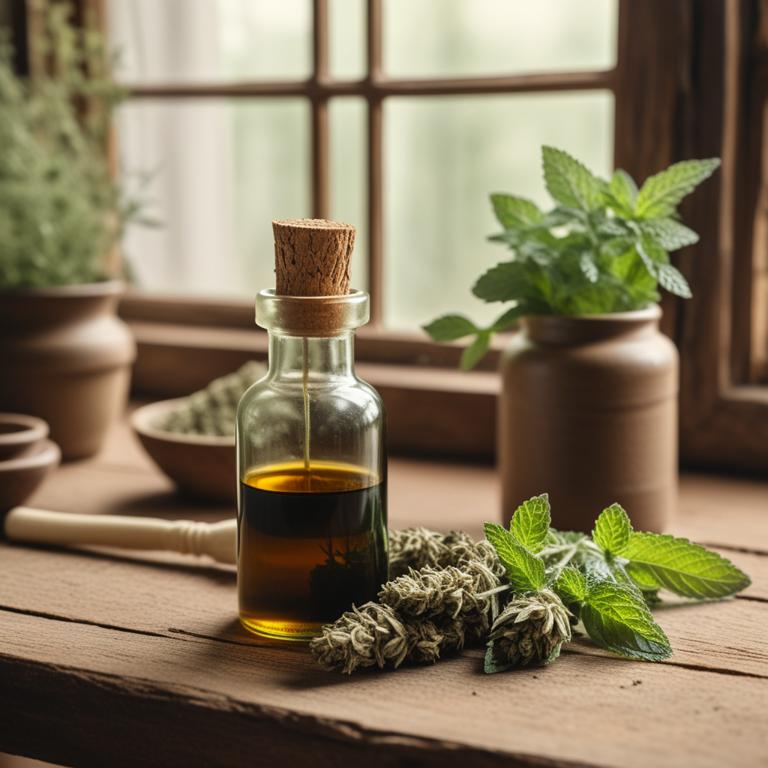
Mentha x piperita tinctures, derived from peppermint, have been traditionally used to treat periodontal disease due to their anti-inflammatory, antimicrobial, and antioxidant properties.
The bioactive constituents of Mentha x piperita, such as menthone and limonene, exhibit strong antibacterial activity that helps to reduce the bacterial load in the oral cavity, thereby mitigating the progression of periodontal disease.
Additionally, the tannins present in peppermint tinctures have astringent properties, which help to reduce inflammation and promote healing in the affected areas.
The benefits of using Mentha x piperita tinctures to treat periodontal disease include reduced inflammation, improved oral health, and a lower risk of complications associated with the condition.
5. Equisetum arvense tinctures
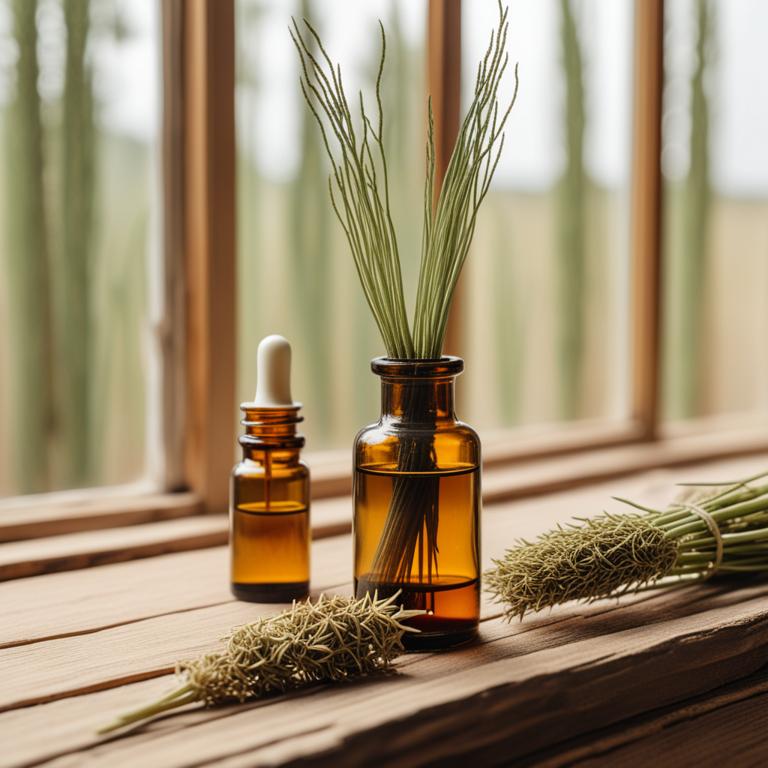
Equisetum arvense tinctures have been traditionally used to treat periodontal disease due to their anti-inflammatory and antimicrobial properties, which help to reduce inflammation and combat bacterial growth in the gums.
The bioactive constituents of Equisetum arvense, including ferulic acid, caffeic acid, and scopoletin, exhibit antioxidant and antimicrobial activities that contribute to its therapeutic effects.
By inhibiting the growth of periodontal pathogens and reducing inflammation, Equisetum arvense tinctures may help to alleviate symptoms of periodontal disease, such as bleeding gums and tooth loss.
The benefits of using Equisetum arvense tinctures to treat periodontal disease include reduced inflammation, improved oral health, and a lower risk of developing more severe complications, making it a promising natural remedy for this condition.
6. Eucalyptus globulus tinctures

Eucalyptus globulus tinctures have been used to treat periodontal disease due to their anti-inflammatory and antibacterial properties, which help to reduce plaque and prevent further gum damage.
The bioactive constituents of Eucalyptus globulus, including eucalyptol and flavonoids, possess potent antimicrobial and antioxidant effects that help to combat the bacteria responsible for periodontal disease.
By reducing inflammation and promoting a healthy oral environment, Eucalyptus globulus tinctures help to prevent the progression of periodontal disease and promote healing of the gums.
The benefits of using Eucalyptus globulus tinctures to treat periodontal disease include reduced inflammation, improved oral health, and a lower risk of complications such as tooth loss and infection.
Related Study
According to "Indian journal of dental research : official publication of Indian Society for Dental Research", Eucalyptus globulus tinctures showed the highest antimicrobial activity against Enterococcus faecalis, a microorganism associated with periodontal disease, and had a growth-inhibitory effect against Porphyromonas gingivalis, another pathogen linked to periodontal disease.
7. Aloe barbadensis tinctures

Aloe barbadensis tinctures have been studied for their potential in treating periodontal disease, a bacterial infection that affects the gums and bone supporting the teeth.
The properties of this herbal preparation, including its anti-inflammatory and antimicrobial properties, help to reduce inflammation and prevent the growth of bacteria that contribute to the disease.
The bioactive constituents of Aloe barbadensis, such as aloin and aloe-emodin, have been found to exhibit antibacterial and anti-inflammatory activities, which help to treat periodontal disease by reducing plaque formation and gingivitis.
The benefits of using Aloe barbadensis tinctures to treat periodontal disease include reduced inflammation, improved wound healing, and a decrease in the risk of tooth loss, making it a potential natural remedy for this common oral health issue.
Related Study
According to the Journal of International Society of Preventive & Community Dentistry, Aloe barbadensis tinctures have excellent applications in treating periodontal diseases.
8. Commiphora molmol tinctures
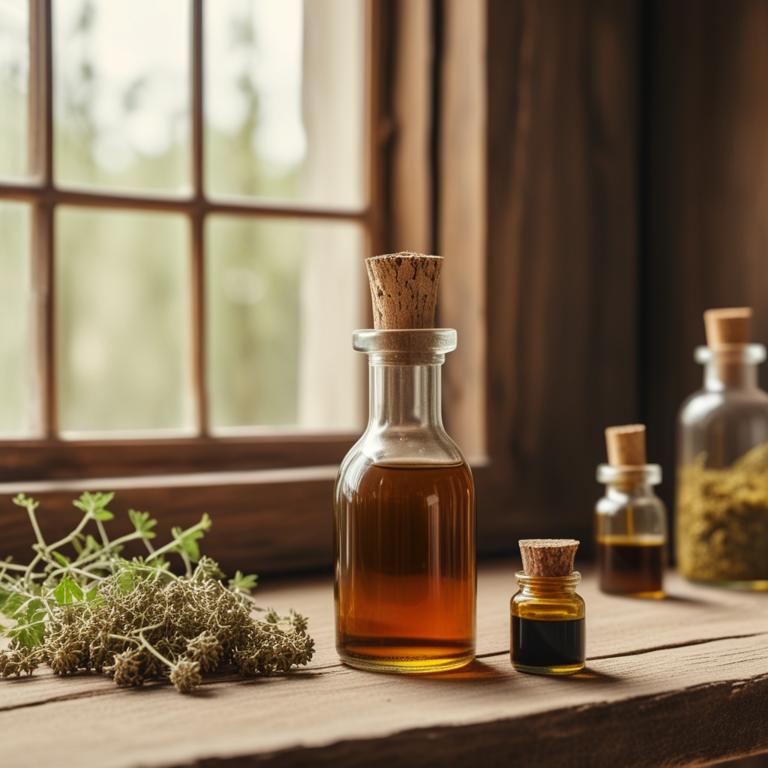
Commiphora molmol tinctures have been traditionally used to treat periodontal disease due to its anti-inflammatory and antimicrobial properties.
The bioactive constituents, including beta-boswellinic acid and 3-acetyl-11-keto-beta-boswellic acid, help to reduce inflammation and combat bacteria that cause periodontal disease.
By reducing inflammation and inhibiting the growth of harmful bacteria, Commiphora molmol tinctures promote a healthy oral environment and aid in the healing of gum tissue.
This herbal preparation is beneficial in treating periodontal disease as it not only alleviates symptoms but also prevents further progression of the condition.
Related Study
According to "Hua xi kou qiang yi xue za zhi = Huaxi kouqiang yixue zazhi = West China journal of stomatology", Commiphora molmol tinctures may prevent and treat periodontal disease by regulating the composition, metabolites, and virulence of oral microorganisms.
9. Thymus vulgaris tinctures
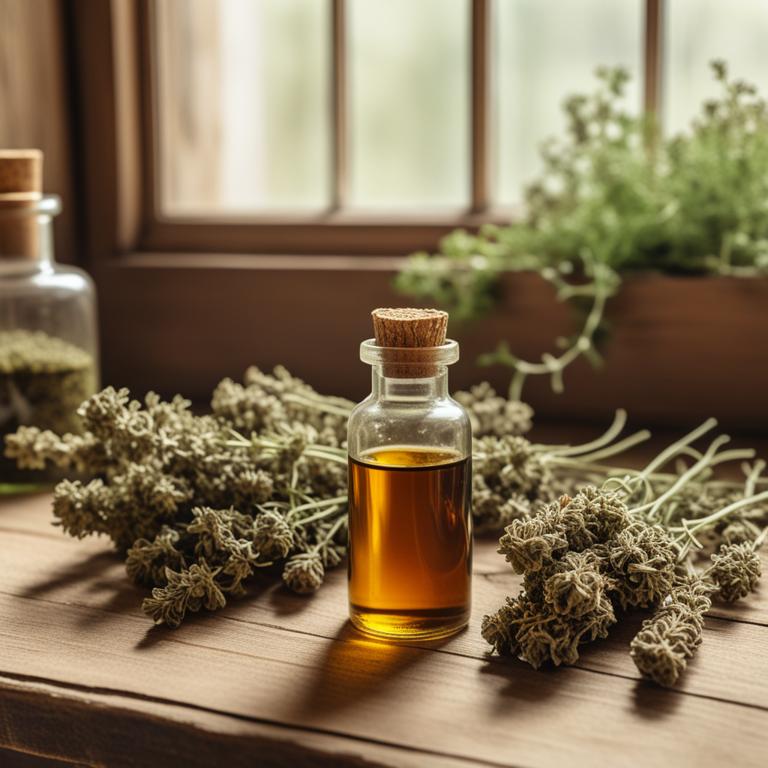
Thymus vulgaris tinctures, derived from the leaves of the thyme plant, have been traditionally used to treat periodontal disease due to their antimicrobial and anti-inflammatory properties.
The bioactive constituents, including thymol and carvacrol, help to combat the bacterial overgrowth associated with periodontal disease, reducing inflammation and promoting a healthy oral environment.
This herbal preparation has been shown to inhibit the growth of periodontal pathogens, such as Porphyromonas gingivalis, and reduce the severity of symptoms, including bleeding gums and tooth loss.
The benefits of using thymus vulgaris tinctures to treat periodontal disease include reduced inflammation, improved oral health, and a decreased risk of complications, making it a valuable natural remedy for this common ailment.
Related Study
According to "Restorative dentistry & endodontics", Thymus vulgaris tinctures, specifically when combined with propolis, showed the lowest minimum inhibitory concentrations (MICs) against the growth of S. aureus, E. coli, and P. aeruginosa bacteria, indicating potential efficacy in treating periodontal disease.
10. Artemisia absinthium tinctures
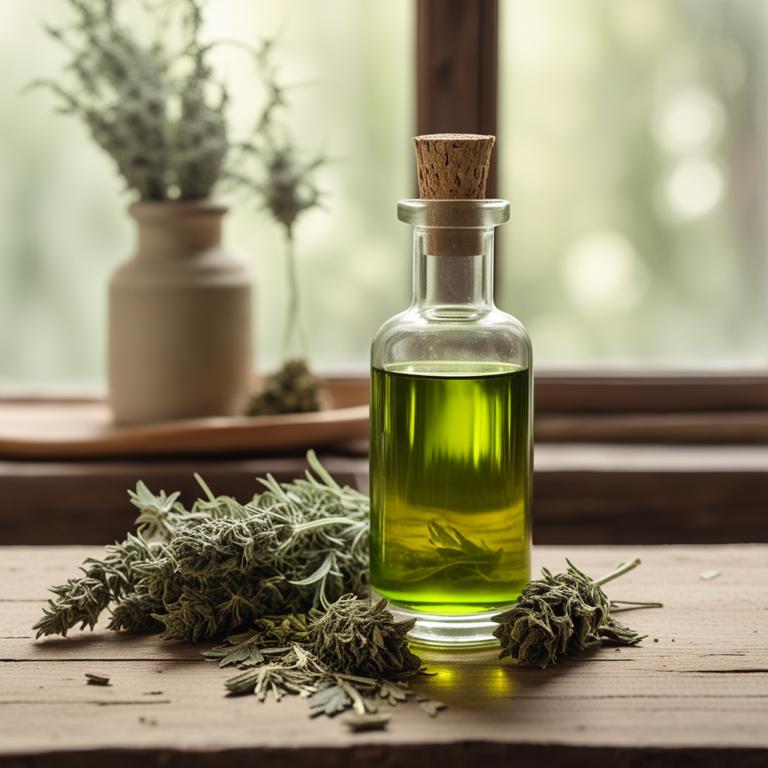
Artemisia absinthium tinctures have been traditionally used to treat periodontal disease, an ailment characterized by inflammation and infection of the gums and surrounding tissues.
The antiseptic and anti-inflammatory properties of this herbal preparation help to reduce bacterial growth and alleviate symptoms such as swelling, redness, and pain.
The bioactive constituents of Artemisia absinthium, including thujone, pinene, and absinthin, possess antimicrobial and antioxidant properties that contribute to its therapeutic effects.
Regular use of Artemisia absinthium tinctures has been found to reduce gum inflammation, prevent tooth loss, and promote overall oral health, making it a valuable natural remedy for treating periodontal disease.
Related Study
According to "Recent patents on drug delivery & formulation", Artemisia absinthium tinctures have been found to have effective antimicrobial properties against various strains of bacteria, suggesting a potential alternative to chemical-based mouthwashes for treating periodontal disease.
11. Glycyrrhiza glabra tinctures

Glycyrrhiza glabra tinctures have been traditionally used to treat periodontal disease due to their anti-inflammatory and antibacterial properties.
These properties help to reduce inflammation and prevent infection in the gums, thereby treating the underlying causes of periodontal disease.
The bioactive constituents of Glycyrrhiza glabra, including glycyrrhizin, flavonoids, and phenolic acids, have been shown to exhibit potent antioxidant and antimicrobial activities, which contribute to their therapeutic effects.
By using Glycyrrhiza glabra tinctures, individuals can benefit from reduced gum inflammation, improved oral health, and a lower risk of developing periodontal disease complications.
Related Study
According to "Journal of International Society of Preventive & Community Dentistry", Glycyrrhiza glabra tinctures for periodontal disease exhibit anti-inflammatory, antioxidant, antibacterial, and astringent properties, effectively inhibiting primary plaque colonizers and periodontal pathogens.